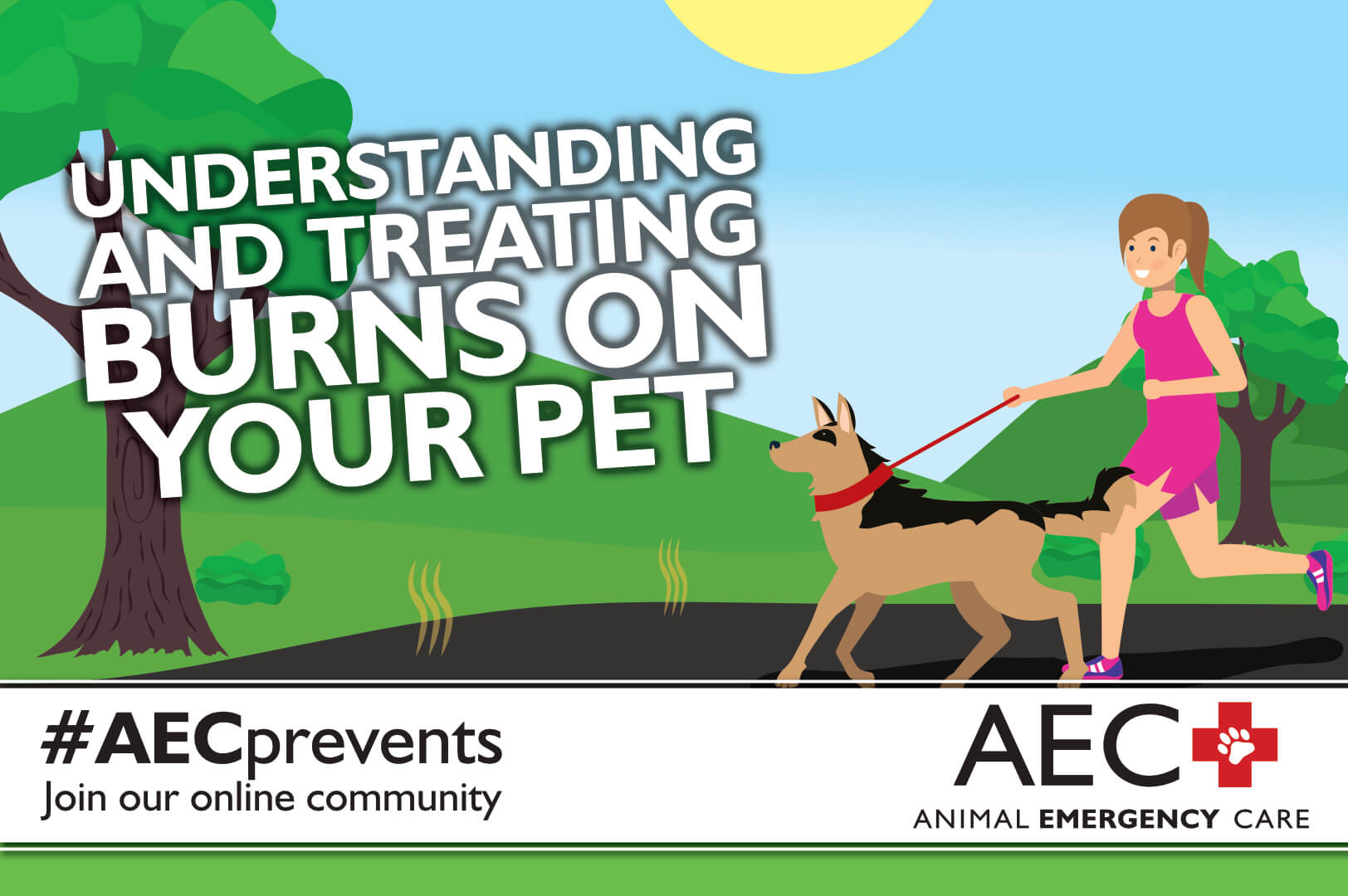Our pets are family, and that bond often means they are glued to their pet owner’s side during household activities. Pets will often stand guard while you complete household chores, especially those that involve cooking or cleaning up following mealtime. Cars particularly enjoy laundry chores and will often assist by curling up in the warm laundry basket of clothes that need folding. Although having your pet nearby can be comforting, their curious nature can get them into trouble or injured. Many household appliances and chemicals can injure or burn your pet, and these injuries are not always immediately obvious. Additionally, pets who have been involved in house fires or are exposed to smoke are at risk for burn injuries. Our Animal Emergency Care team wants to ensure pet owners are ready to respond if their pet is burned, and we describe burn types, signs, treatment, and prevention.
What are burns in pets?
Burns can occur as a result of tissue injury from heat, flames, chemicals, or electricity. Thermal burns caused by agents that include fire, steam, hot liquids, and heating devices are the most common in pets. Burn injuries are painful and can lead to partial or complete skin damage, as well as secondary problems including heart abnormalities, respiratory problems, dehydration, and metabolic disease. Severe burn injuries can be life-threatening. Burns are classified by the number of damaged skin layers and by injury severity. Burn classification includes:
- First-degree (superficial) — Only the outermost skin layer, or epidermis, is affected and these burns will typically heal quickly.
- Second-degree (partial thickness) — Deeper skin layers are affected and blistering and skin draining can occur. Pets with second-degree burns are at risk for infection.
- Third-degree (full thickness) — All skin layers are affected, as well as subcutaneous tissue. Bones, muscles, ligaments, and tendons may also be damaged. Pets will lose sensation in the affected area and will develop scars after healing.
Clinical burn signs in pets
Clinical burn signs will vary depending on the burn type and severity and may not be immediately obvious to pet owners. Pets who have superficial burns will likely have mildly red painful skin. Pets who have had fire or smoke exposure are at risk for associated medical problems. Read more about smoke inhalation in our previous blog. Clinical burn signs may include:
- Pale, yellow, gray, tan, or black skin
- Hair loss around burn area
- Hair that is easily removed around a burn
- Blistered skin
- Foul-smelling skin
- Pale or blue gums
- Vomiting
- Difficulty breathing
- Heart arrhythmias
- Muscle spasms
- Seizures
- Excess salivation
Burn diagnosis and treatment in pets
If you observe your pet being burned, immediately rinse the area with cool water and call your veterinarian. Your pet will need immediate veterinary care if they have any burn signs or have been exposed to smoke or fire. Diagnosis is based on the extent of your pet’s skin damage. Burn severity may not be immediately obvious so ensure you inform your veterinarian the burn source, such as steam or a stove, and the length of exposure if possible. Your veterinarian may recommend a complete blood count and serum biochemistry test to rule out any concurrent medical problems. Advanced imaging such an X-ray, ultrasound, or computed tomography (CT) scan may be recommended to check heart function, potential airway injury, and overall respiratory tract function. Treatment will depend on your pet’s burn type and severity and may include:
- Intravenous fluids
- Pain medications
- Topical antibiotic or wound healing medications
- Daily bandages
- Antibiotics
- Specialized diet or feeding tube
- Surgical wound management
Financial options for your pet’s burn treatment
Pets undergoing burn treatment may require an extended hospital stay and several checkups, which can be expensive. Consider purchasing a pet health insurance plan like Trupanion when your pet is young to ensure funds are available for such long-term care. Trupanion can pay your veterinary clinic directly which eliminates the need to submit paperwork and wait for reimbursements. Other financial options that can cover treatment costs include:
- Care Credit
- Scratch Pay
- Pet health savings accounts
- Short-term loans
Burn prevention in pets
Ensure you keep your pet out of the kitchen or away from outdoor grills when you are cooking to prevent them from being accidentally burned. Store all chemicals out of paws’ reach and keep pets in a separate area when you are cleaning or using chemicals. Additional burn prevention tips include:
- Never leave your pet unsupervised around lit candles or fireplaces.
- Always check for a resting pet before turning on the clothes dryer.
- Never allow your pet to lie directly on your heating pad.
- Equip your home with monitored smoke and carbon monoxide detectors to ensure a quick response following a fire or chemical exposure.
Call your family veterinarian right away if your pet has been burned. If you need help after hours, contact Animal Emergency Care, and bring in your pet for immediate treatment. #AECprevents
Sources:
https://www.petmd.com/dog/emergency/accidents-injuries/e_dg_burns_and_scalding
https://veterinarypartner.vin.com/default.aspx?pid=19239&id=4951347
https://www.cliniciansbrief.com/article/burns
https://www.hillspet.com/pet-care/routine-care/pet-fire-safety-and-burn-treatment


